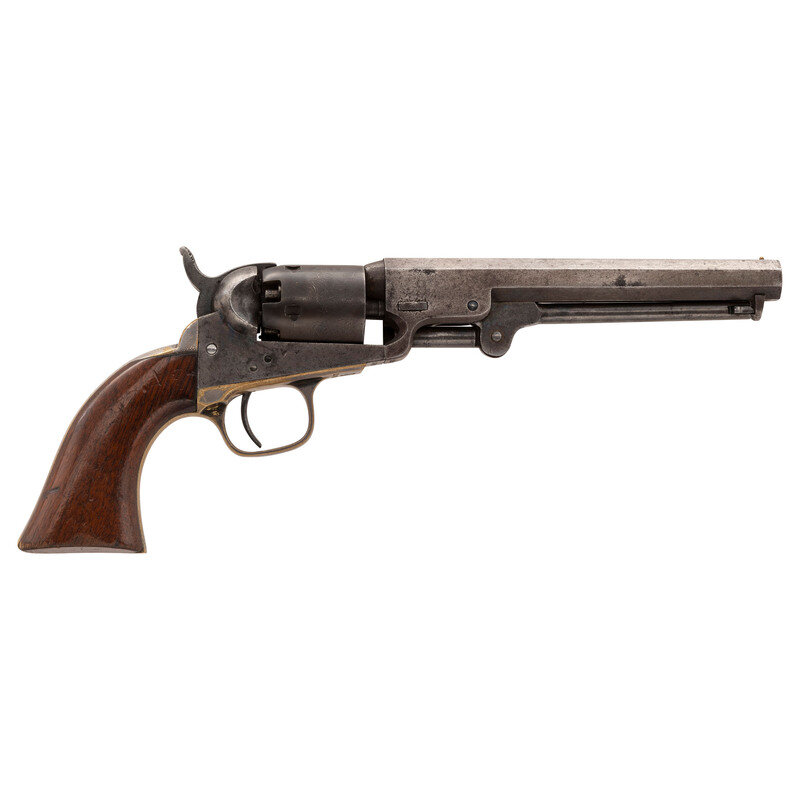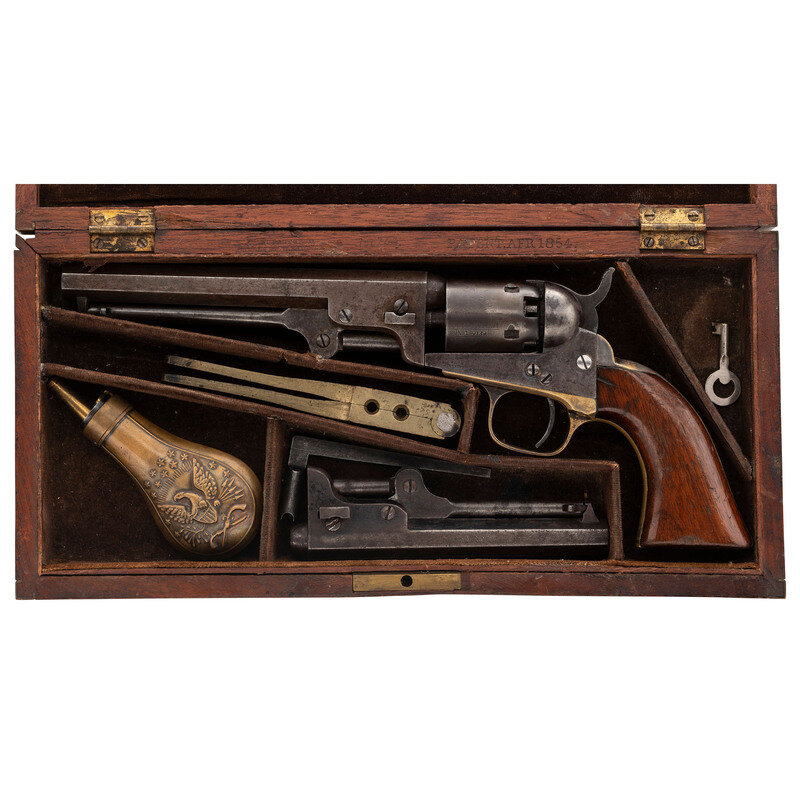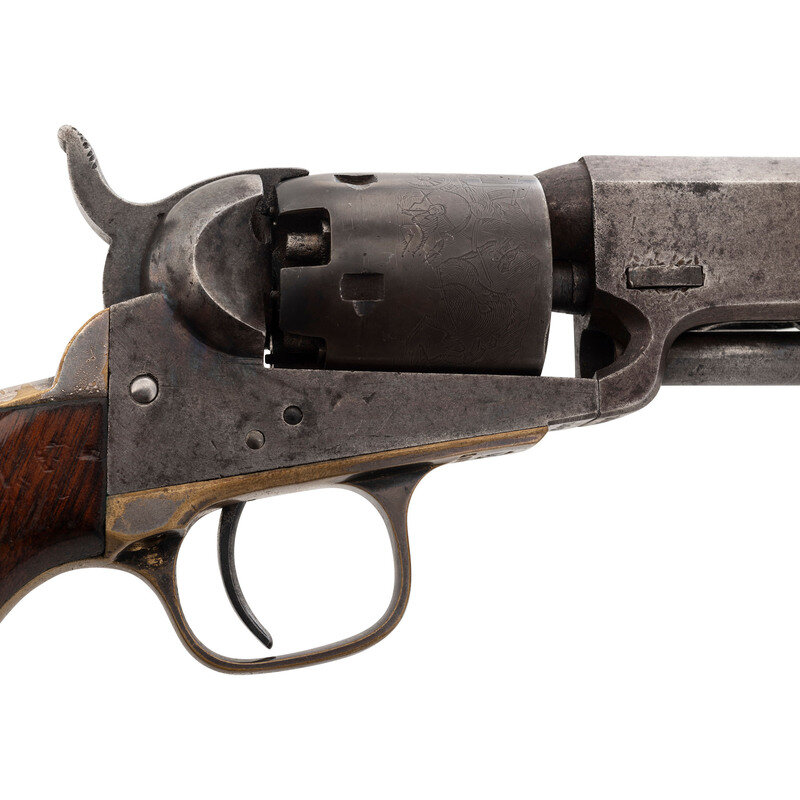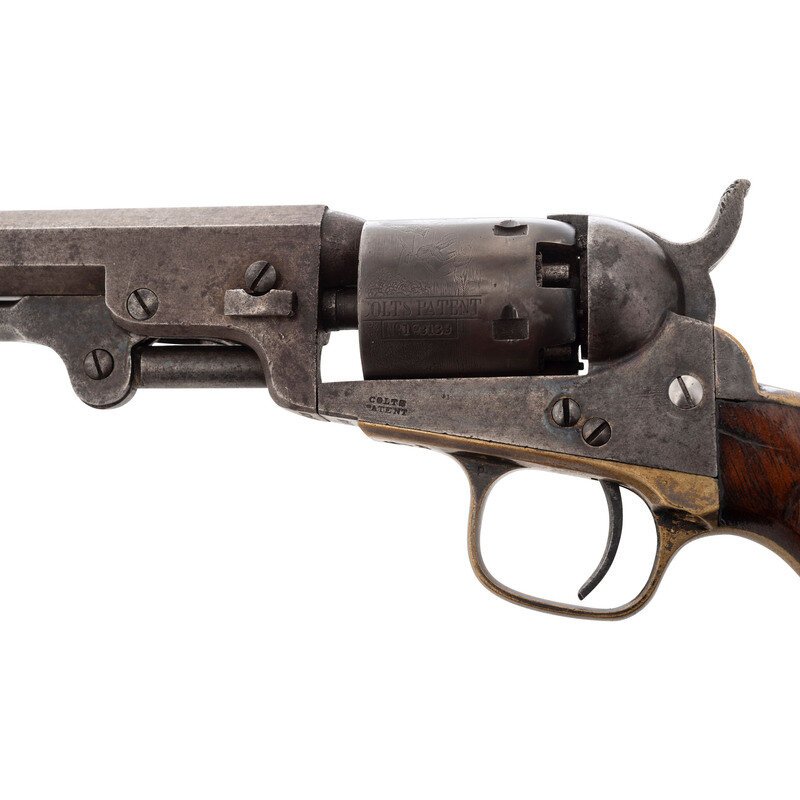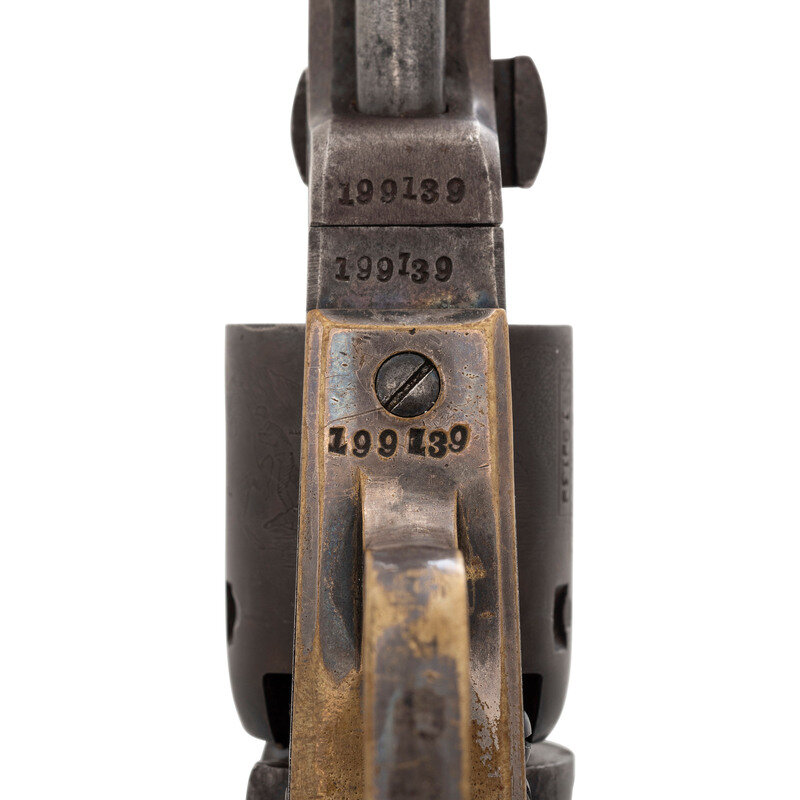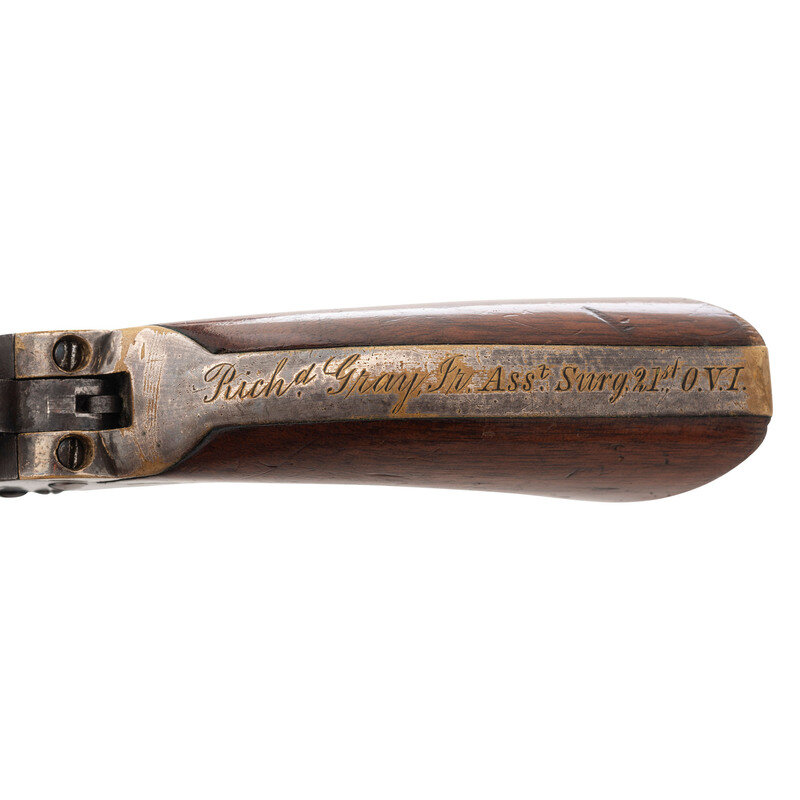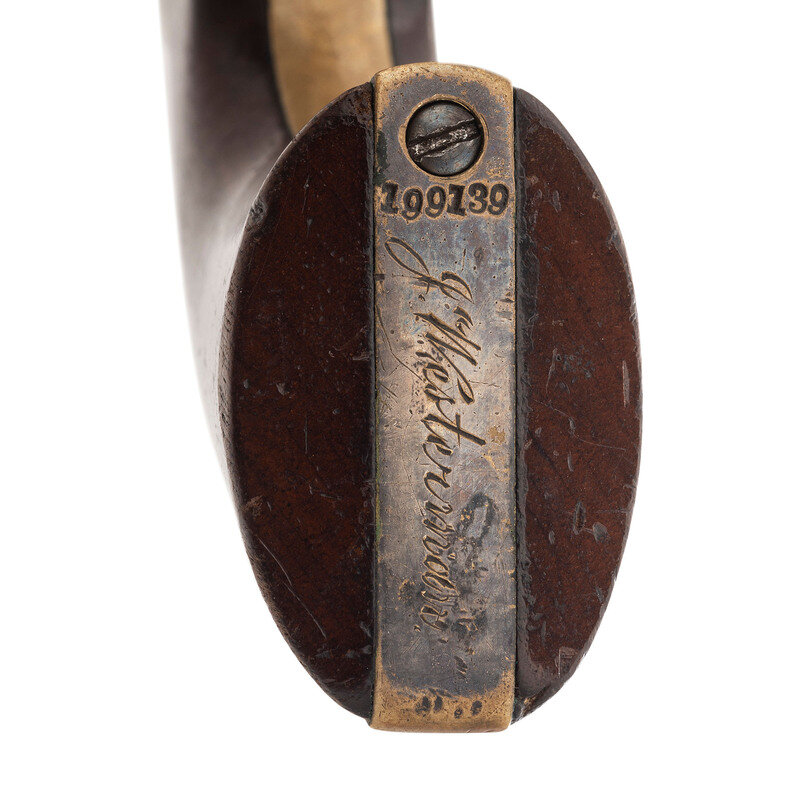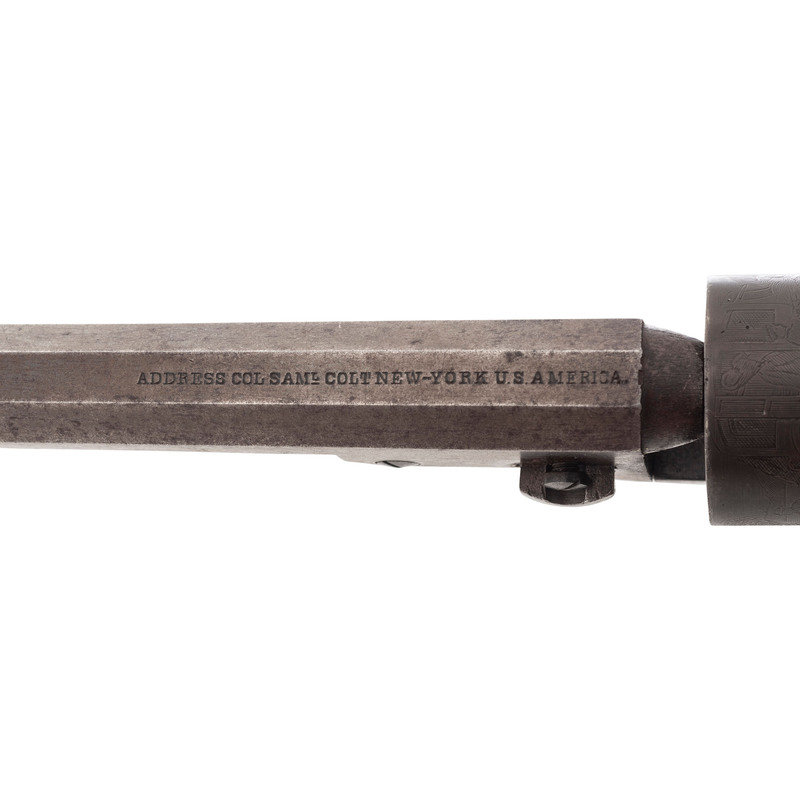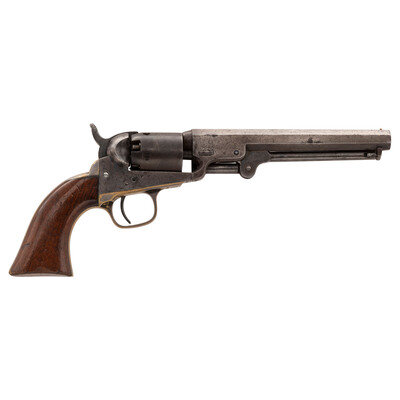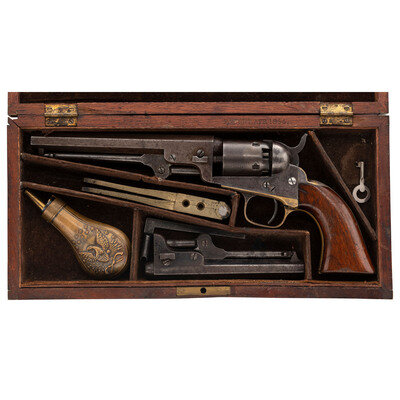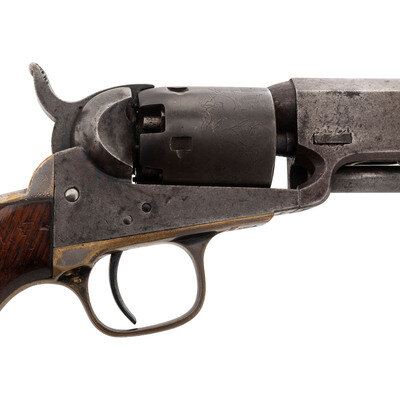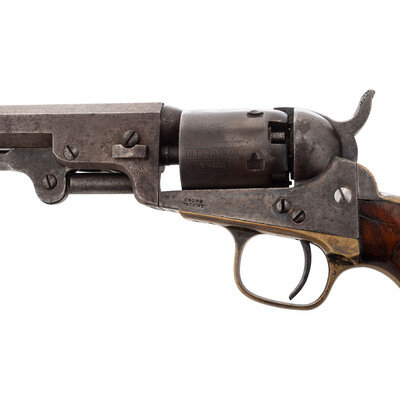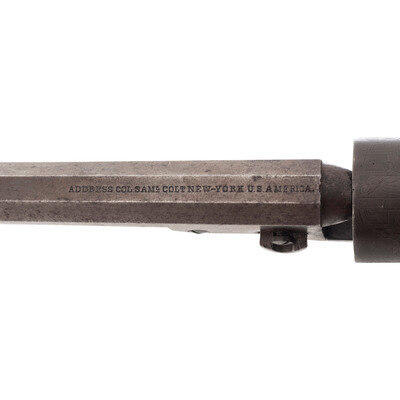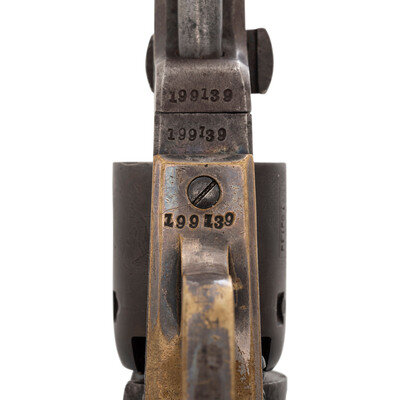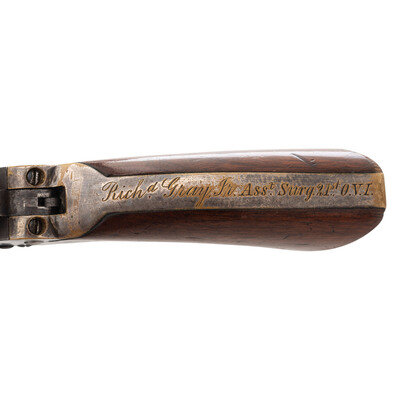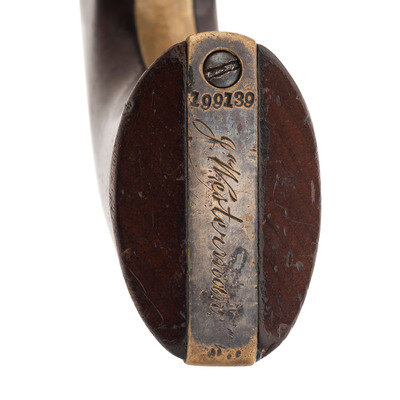Condition Report
Contact Information
Auction Specialist
Lot 50
Lot Description
.31 caliber. 6" and 5" barrels. SN: 199139 (mfg. ca.1862). Blued and color casehardened finish, silver plated brass backstrap and triggerguard, varnished one-piece wood grip. Single action five shot percussion revolver. Both barrels marked with the one-line New York address reading - ADDRESS COL SAML COLT NEW-YORK U.S. AMERICA -. Lower left of frame with COLT'S / PATENT marking. Cylinder with Stagecoach Hold Up scene and standard COLT'S PATENT mark followed by the serial number. All serial numbers match throughout with the exception of the extra 5" barrel and wedge which are unnumbered Colt parts. Revolver is inscribed on the backstrap Richd. Gray Jr. Asst. Surg. 21st O.V.I. and the on the butt J Westerman. The revolver is contained in a Kidder patent sectionalized wood case with a brown velvet interior. The case contains the spare 5" barrel, a brass dual cavity COLT'S / PATENT marked mold, a copper pocket revolver sized Eagle Flask, a Colt combination tool and a key for the case's lock. The casing marked with the Kidder manufacturing mark as well as with the patent date of 1854. It is also scratched marked with the serial number 100243.
Richard Gray Jr (1830-1895) was a 32 year old doctor from Hamilton, Ohio when he mustered into the 21st Ohio Volunteer Infantry Regiment on August 21, 1862 as their Assistant Surgeon. Gray had been born in England at Tower Hill and was about 5 years old when his parents emigrated to the United States. The 21st Ohio was one of the few Infantry regiments to be armed with repeating rifles during the war, in this case Colt Revolving Rifles. Six of their eight companies were so armed with the last two companies being armed with conventional muzzleloading British Pattern 1853 Enfield Rifle Muskets. While the Colt rifles had a mixed reputation in combat due to the inherent dangers of using revolving percussion long arms, their ability to fire a large amount of ammunition quickly made them a formidable weapon, particularly when grouped together in large numbers.
The 21st Ohio spent their entire service in the Western Theater, fighting at Stones River (Murfreesboro), Chickamauga, the Atlanta Campaign, Sherman's March to the Sea, the Carolina Campaign and at Bentonville. It was at Chickamauga that they earned their reputation for saving the Union Army, as the regiment who was in reserve at the time advanced to Snodgrass Hill to repulse a Confederate breakthrough. The regiment utilized their revolving rifles to good effect that day, blunting a Confederate advance with firepower so impressive the southerners thought they were fighting an entire division, not just a regiment. The 540 members of the regiment engaged that day fired some 43,550 rounds of ammunition and only quit the field because they were out of ammunition and the supply train that had their extra Colt cartridges had already retreated. In the end the regiment lost some 265 men killed, wounded or captured that day, but prevented a total and complete route of the Union Army.
Gray mustered out with the remnants of the regiment on June 6, 1865 and returned to his work in the Cincinnati area as a doctor. He moved to Ashland, OH around 1871 and remained in practice there for much of his life until he died in 1895. During the later years of his life he applied for an invalid pension due to illnesses contracted during his military service. It is not completely clear if the "J Westerman" name on the butt of the revolver is the person who gave the gun to Gray or if he may have owned it later. A total of eight men with the first initial "J" and the last name "Westerman" served in Ohio regiments during the Civil War, but none were in the 21st OH. It is also possible that the gun was given to Gray in lieu of payment for services rendered by a patient, as it was not uncommon for mid-to-late 19th century doctors to receive payment via barter.
A large binder of information about Gray and the 21st Ohio is included with the gun, along with information the last owner put together about who the mysterious "J Westerman" was. This gun was published in Colt's History and Heros by John G Hamilton and appears as figure 25 on page 26.
From the Collection of George Oldenbourg
